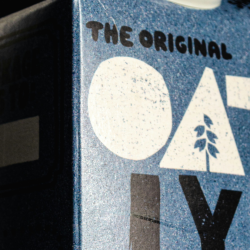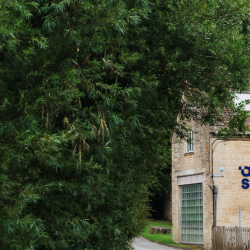Did you know that your body responds to anxiety and excitement psychologically in almost the exact same way? Elevated heart rate, sweatiness, dilated pupils – these are reactions from the arousal of the nervous system. Yet we can easily distinguish when you are feeling nervous or feeling anxious. That is because humans are hardwired to resist uncertainty and our anatomical predisposition automatically turns on the ‘fight or flight’ mode when an event is perceived as stressful.
The good thing is that your brain does not have the ability to differentiate between fact and lie, it will believe whatever you tell it to believe. Therefore, your mindset and perspective on change are going to determine how to react to it – you can either view change as a threat or an opportunity for growth, the choice is up to you.
In today’s everchanging world, let me offer you some practical tips on thriving in change.
Understand the two parts of our brain
I recently took a coaching qualification at the Neuromindfulness Institute which enabled me to better understand how neuroscience can help us handle life (and change) better. One thing I learned that fundamentally changed the way I react and manage change is that our brain is made up of two distinct, often competing, systems – limbic and pre-frontal cortex. The limbic system is the oldest part of the brain that is shaped by human evolution and our intuitive need to fight and survive in the stone age. As humanity evolves, our prefrontal cortex develops and assumes responsibility for our cognitive function, logics and empathy.
Daniel Kahneman explains the two parts of the brain eloquently in his world-renowned book Thinking, Fast and Slow that our brain tends to automatically use its limbic system because it is fast, easy and intuitive. Thus we must not rely simply on our immediate reaction but consciously activate our pre-frontal cortex, the analytical part of the brain to evaluate our reactions and decisions.
Manage the monkey mind
Now that we have a clearer picture of how our brain functions, how can we better face change? Practising mindfulness should be a top priority. From the pandemic to inflation to geopolitical changes, we have no control over any of these external disruptions. What we can control is how we react to them by breathing, reflecting and resetting.
Breathing is a quick way to ‘hack’ our brain into a calmer state. By taking slow and deep breaths from your stomach, you signal your brain to calm down and let go of any triggers of fear, anger or anxiety. Deep breathing also increases awareness which helps you be more intentional and attentional to your thoughts, words and actions.
Reflecting requires immense self-awareness. It is about having an honest conversation with yourself about not only how you are feeling but how you are reacting to your surroundings. You can reflect by journaling, asking for feedback or simply listening and exploring new perspectives.
Resetting your mindset can be very powerful. How you view a situation is going to determine your subsequent actions. By setting a positive mindset you are imbuing your brain with optimism while prolonged negative thinking can lead to cognitive decline, memory loss and anxiety. Even in extreme situations such as war, you can choose your thoughts. Edith Eger, psychologist and Holocaust survivor, has famously said “…no one can take away from you what you put in your own mind.”
Embrace change
While change is the only constant, it does not mean we need to completely let go of the past or the norm. A good way to manage change is to emphasise what remains rather than changes. The industry we operate in is a fast-paced and innovative place, and many of us feel the need to transform or dive in head first into new trends and ideas. Take digital transformation as an example. The rising domination of data, technology and automation in the marketing industry has been seen as a demise of creativity. Machines and humans are deemed as competing forces. But if we shift our mindset from ‘this or that’ to ‘this and that’, we create a space where differences become strengths and integration becomes a competitive advantage. Marketers who make technologies more human and creativity more data-driven ultimately stand out.
And no matter who you are and what you do, knowing your purpose and values and using them as an anchor will help you to stay afloat in life’s rise and fall. This principle applies to brands as well – upholding your brand purpose as the compass of your business decision makings will result in measurable long-term benefits such as brand affinity, employee engagement and financial returns, as well as ensuring the necessary change can be faced with success.
Featured image: Saâd FARAJI / Unsplash
































